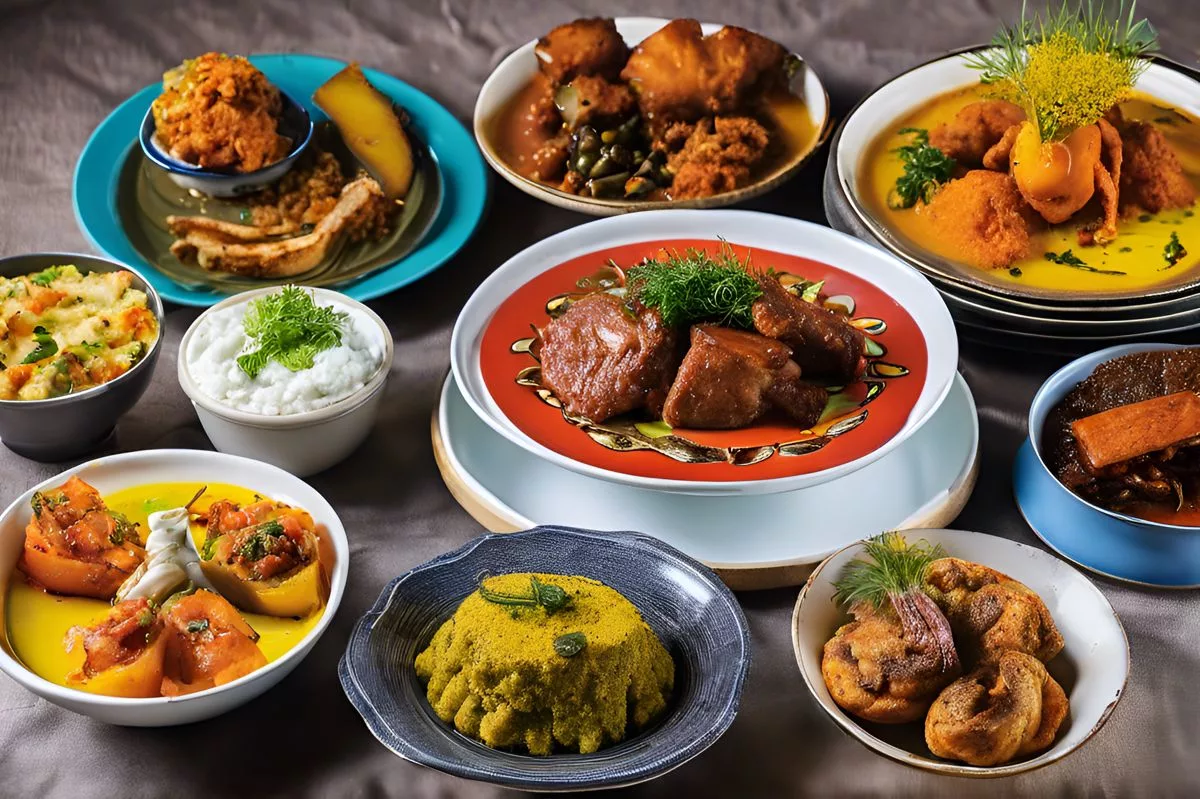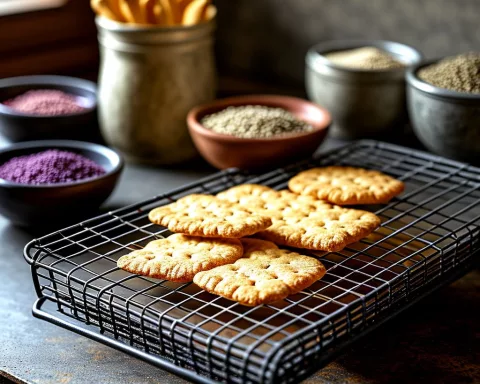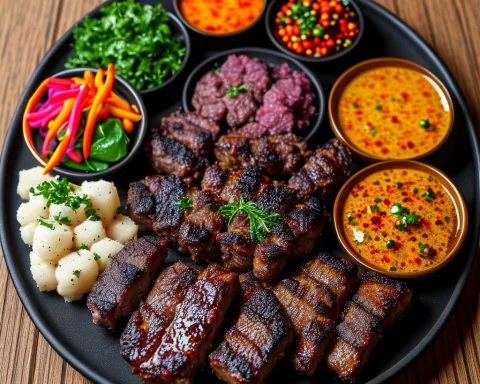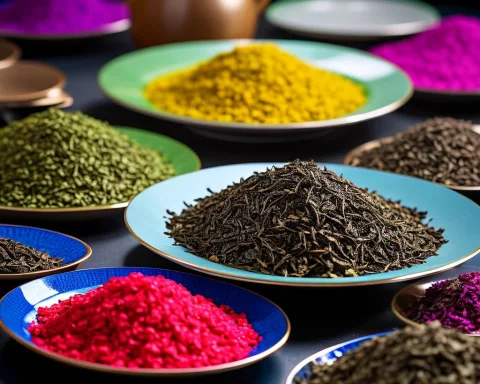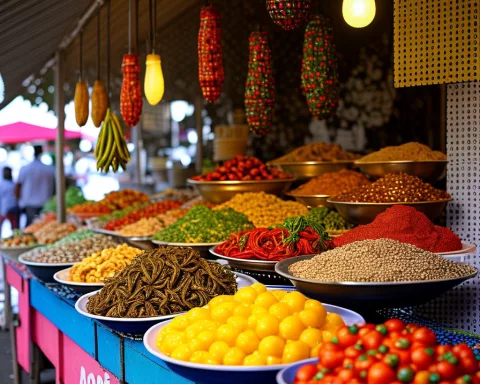South African cuisine is a colorful mix of flavors and stories, blending local traditions, colonial influences, and immigrant tastes. Dishes like biltong, bunny chow, and bobotie reveal the country’s rich history and the creativity of its people. Biltong, a dried meat snack, shows how early settlers adapted to new challenges, while bunny chow, filled with spicy curry in bread, highlights the influence of Indian workers. Meanwhile, bobotie combines Cape Malay and local ingredients, creating a dish that continues to bring people together. Overall, South African food is a delicious journey through culture and history, celebrating the unity and diversity of the nation.
What defines South African cuisine?
South African cuisine is a vibrant blend of indigenous traditions, colonial influences, and immigrant flavors. Key dishes like biltong, bunny chow, and bobotie showcase the country’s rich cultural intersections, highlighting adaptability and innovation while connecting people to their culinary heritage.
The culinary heritage of South Africa is a dynamic mosaic, intricately crafted from indigenous customs, colonial influences, and the rich traditions brought by immigrant communities. As one explores this vibrant food culture, the essence of the nation’s complex history unfolds through each dish. The tale of South African gastronomy begins with its earliest inhabitants and evolves with every new wave of settlers, each adding their unique recipes and cooking techniques to the country’s diverse culinary landscape.
Biltong: A Testament to Ingenuity
Biltong, an enduring favorite among South Africans, traces its origins to the resourcefulness of 17th-century Dutch pioneers. As these early settlers embarked on arduous journeys across harsh terrains, they faced the challenge of preserving meat without refrigeration. Drawing inspiration from indigenous drying methods, they enhanced these techniques by incorporating European curing practices with vinegar and spices. This innovation not only extended the meat’s shelf life but also provided a crucial food source during the Great Trek. Today, biltong remains a beloved emblem of the perseverance and ingenuity of South Africa’s early European settlers.
The production of biltong reveals a story of adaptation and survival. As Dutch settlers navigated the challenges of a new land, their ability to integrate local practices with their own traditions exemplifies the fusion of cultures that defines South African cuisine. The enduring popularity of biltong showcases a piece of history that continues to be celebrated across generations, reflecting the enduring spirit of those who crafted it.
Moreover, biltong’s evolution into a modern snack highlights how traditional foods adapt to contemporary tastes. With a variety of flavors and textures now available, biltong’s versatility underscores its lasting appeal within South African food culture. This iconic treat not only connects individuals to their heritage but also invites newcomers to partake in a shared culinary tradition.
Bunny Chow: A Fusion of Necessity and Flavor
In the bustling city of Durban, the streets narrate the origin of bunny chow, a dish that emerged from necessity and creativity. The early 20th century saw the arrival of Indian laborers, who brought with them a rich culinary tradition as they worked on sugarcane plantations. These workers needed a practical way to enjoy their spiced curry meals during brief breaks, leading to the creation of bunny chow. By using hollowed-out bread to hold the curry, they eliminated the need for utensils and created a portable meal. Despite its name, bunny chow contains no rabbit, and it stands as a testament to the resourcefulness and adaptability of the Indian immigrant community.
The story of bunny chow exemplifies the fusion of flavors that has become quintessentially South African. This dish reflects the melding of Indian spices with local ingredients, resulting in a unique culinary experience that has become a beloved staple in South African cuisine. Its popularity not only speaks to its delicious taste but also to the harmonious blending of cultures that characterizes the nation’s culinary identity.
Bunny chow continues to evolve, with variations emerging to suit modern palates. The dish’s adaptability is a reflection of South Africa’s dynamic food culture, where traditional recipes are reimagined to cater to contemporary dining preferences. This evolution ensures that bunny chow remains a symbol of innovation and cultural fusion, celebrating the diversity that defines South African cuisine.
Bobotie: A Melange of Cultures
The creation of bobotie reflects the blending of culinary traditions brought by the Cape Malay community and the local ingredients available in South Africa. This fusion resulted in a dish that not only delights the senses but also tells a story of cultural integration and adaptation. Bobotie’s appeal lies in its ability to connect people with the rich history and diverse influences that have shaped South African cuisine.
As bobotie continues to be a favorite dish in South African households, it serves as a reminder of the cultural intersections that define the nation’s culinary landscape. The enduring popularity of bobotie highlights the importance of preserving traditional recipes while allowing them to evolve with changing tastes. This balance ensures that South African cuisine remains both authentic and innovative.
Pap and Melktert: Foundation and Sweetness
Pap, a cornerstone of South African cuisine, has its roots in the dietary practices of indigenous peoples, particularly the Bantu-speaking communities. Long before maize became the predominant grain, sorghum was the staple. The introduction of maize by Portuguese traders in the 16th century saw it replace sorghum due to its versatility and abundance. Pap, often served with stews, vegetables, or grilled meats, remains a dietary staple. Its presence at communal meals underscores its role as a symbol of unity and sustenance within South African culture.
The journey of the milk tart, or melktert, begins with the Dutch settlers of the 1600s. This creamy dessert, reminiscent of European custard tarts, underwent a transformation in South Africa, incorporating locally sourced ingredients, particularly the rich milk from the flourishing dairy industry. Melktert has since become a beloved dessert, its smooth texture and subtle sweetness gracing tables at celebrations and everyday gatherings alike.
Together, pap and melktert represent the foundational and sweet aspects of South African cuisine. Pap provides nourishment and sustenance, while melktert offers a delightful conclusion to a meal. Both dishes highlight the enduring influence of indigenous and colonial practices on the country’s culinary traditions, showcasing the blend of simplicity and indulgence that defines South African food culture.
Cultural Intersections: A Culinary Journey
Beyond these iconic dishes, South African cuisine narrates a story of cultural intersections. The country’s diverse landscape and history have cultivated a culinary diversity that is both unique and inviting. From the aromatic spice markets of Cape Town to the bustling food stalls of Johannesburg, the flavors of South Africa offer an invitation to explore, appreciate, and savor the nation’s rich culinary heritage.
Yet, the story of South African cuisine is not static. It continues to evolve, embracing new influences and adapting to contemporary tastes. Chefs and home cooks alike draw inspiration from the past while innovating for the future. This dynamic evolution ensures that the culinary heritage of South Africa remains vibrant and relevant.
The rich tapestry of South African food is a testament to the resilience and creativity of its people. Each dish tells a story of survival, adaptation, and celebration. It is a journey through time and culture, where every bite offers a taste of history and a glimpse into the soul of a nation. As South Africa continues to navigate its path forward, its culinary traditions offer a delicious reminder of the diverse influences that have shaped its identity.
FAQs about South African Cuisine
What defines South African cuisine?
South African cuisine is characterized by a vibrant blend of indigenous traditions, colonial influences, and immigrant flavors. Key dishes such as biltong, bunny chow, and bobotie illustrate the country’s rich cultural intersections, showcasing adaptability and innovation while connecting people to their culinary heritage.
What is biltong and how did it originate?
Biltong is a popular dried meat snack in South Africa, originating from the resourcefulness of 17th-century Dutch pioneers. Faced with the challenges of preserving meat without refrigeration, these early settlers adapted indigenous drying methods and combined them with European curing practices. Today, biltong remains a beloved emblem of South African culinary heritage.
How did bunny chow come to be a popular dish in South Africa?
Bunny chow originated in Durban in the early 20th century, created by Indian laborers who needed a convenient way to enjoy their spiced curry meals. By using hollowed-out bread to hold the curry, they crafted a portable meal that eliminated the need for utensils. The dish is a testament to the resourcefulness and adaptability of the Indian immigrant community in South Africa.
What is bobotie and what cultural influences does it reflect?
Bobotie is a dish that showcases the blending of culinary traditions brought by the Cape Malay community, combined with local ingredients. This fusion reflects the rich history and diverse influences that have shaped South African cuisine, making bobotie a favorite in households and a symbol of cultural integration.
What role do pap and melktert play in South African cuisine?
Pap is a dietary staple in South Africa, with roots in the practices of indigenous peoples. Traditionally served with stews or grilled meats, it symbolizes unity and sustenance. Melktert, a creamy dessert with origins from Dutch settlers, has transformed over time to incorporate local ingredients. Together, they represent the foundational and sweet aspects of South African food culture.
How does South African cuisine continue to evolve?
South African cuisine is dynamic, continually embracing new influences and adapting to contemporary tastes. Chefs and home cooks draw inspiration from traditional recipes while innovating for modern dining preferences. This evolution ensures that the culinary heritage of South Africa remains vibrant and relevant, celebrating the diverse influences that shape the nation’s identity.

